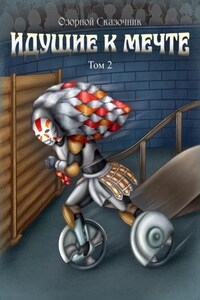William Collins
An imprint of HarperCollinsPublishers
1 London Bridge Street
London SE1 9GF
WilliamCollinsBooks.com
This eBook edition published by William Collins in 2016
1 3 5 7 9 8 6 4 2
Text © Ben Fogle 2016
Photographs © Individual copyright holders
While every effort has been made to trace copyright holders and to obtain their permission for the use of copyright material, the author and publisher would be grateful to be notified of any errors or omissions in the above list that can be rectified in future editions of this book.
Ben Fogle asserts the moral right to be identified as the author of this work
Cover photographs: bottom © Matthew Ward/Getty Images; top © JLR Ltd
A catalogue record for this book is available from the British Library
All rights reserved under International and Pan-American Copyright Conventions. By payment of the required fees, you have been granted the non-exclusive, non-transferable right to access and read the text of this e-book on-screen. No part of this text may be reproduced, transmitted, down-loaded, decompiled, reverse engineered, or stored in or introduced into any information storage and retrieval system, in any form or by any means, whether electronic or mechanical, now known or hereinafter invented, without the express written permission of HarperCollins.
Source ISBN: 9780008194222
Ebook Edition © October 2016 ISBN: 9780008194239
Version: 2017-05-04
LAND ROVER
The Series I, II, IIa, III, 90, 110 and Defender are all members of the iconic ‘boxy’ Land Rover genre, first produced in 1948, with the current version called Land Rover Defender. To avoid any confusion, in this book I will sometimes refer to them all using Defender as a collective noun. Please don’t hate me.
Lode Lane, Solihull is a flurry of activity. The brick walls are still covered in camouflage paint to disguise the factory from German air raids. The waters of the Birmingham canal flow close by, ready to extinguish any fires from falling bombs. Nearby a field has been transformed into a ‘jungle track’ to test the vehicles. On the factory floor inside, a team of workers are riveting aluminium plates and fixing axles to chassis on cars in various states of deconstruction. This is the famous Solihull Land Rover factory and the workmen are building some of the most iconic cars ever built, the Land Rover Series I, a car that changed the world. But this is not 1948. It is 2016 and I am watching third-generation factory workers making Series I vehicles on the same patch of land that their grandfathers had once done.
Just a few months before, the world had mourned as the very last Defender, the evolution of the Series I, rolled off the factory line. The lights went out on 67 years of iconic history. It had been the end, but now I was back at the very beginning for the rebirth. Where most evolve and advance, here at Lode Lane, workers were using decade-old tools and technology to regress to a simpler time. To make a vehicle born out of post-war rationing to help a country rebuild. This is the reborn project at Land Rover where buyers can spend more money on a ‘new’ 68-year-old vehicle than a top-of-the-range sports car.
As I bounced, cantilevered and splashed along the very same ‘jungle track’ once used by the Wilks brothers to demonstrate the capabilities of these workhorse vehicles, I couldn’t help but marvel at the ageless charm of these iconic cars. Regressive progression. Nostalgic advancement. The new old. Was this the rebirth? Had the Land Rover ever really died? Or was this really the resurrection we had all dreamed of?
It is an oxymoron but a fitting metaphor for the story of the greatest car ever made.
‘Do not go where the path may lead,
go instead where there is no path and leave a trail’
Ralph Waldo Emerson
Sometimes you don’t know what you’ve got until it’s gone.
At 9.30am on 29 January 2016, the 2,016,933rd Defender rolled off the production line at Land Rover’s factory at Lode Lane, Solihull, on the outskirts of Birmingham. It marked the end of 67 years of continuous production of the world’s most famous vehicle. The final Defender.
In all those years, the workhorse Defender had served farmers and foresters, armies and air forces, explorers and scientists, construction and utility companies – in fact, everyone who needed a good, honest vehicle that would do a good, honest job anywhere in the world. And there were a lot more people who bought one just for fun, too – for its sheer brilliant off-road ability and austere utilitarian attitude that made it so different to the rest of today’s homogenised, jelly-mould automotive offerings.














